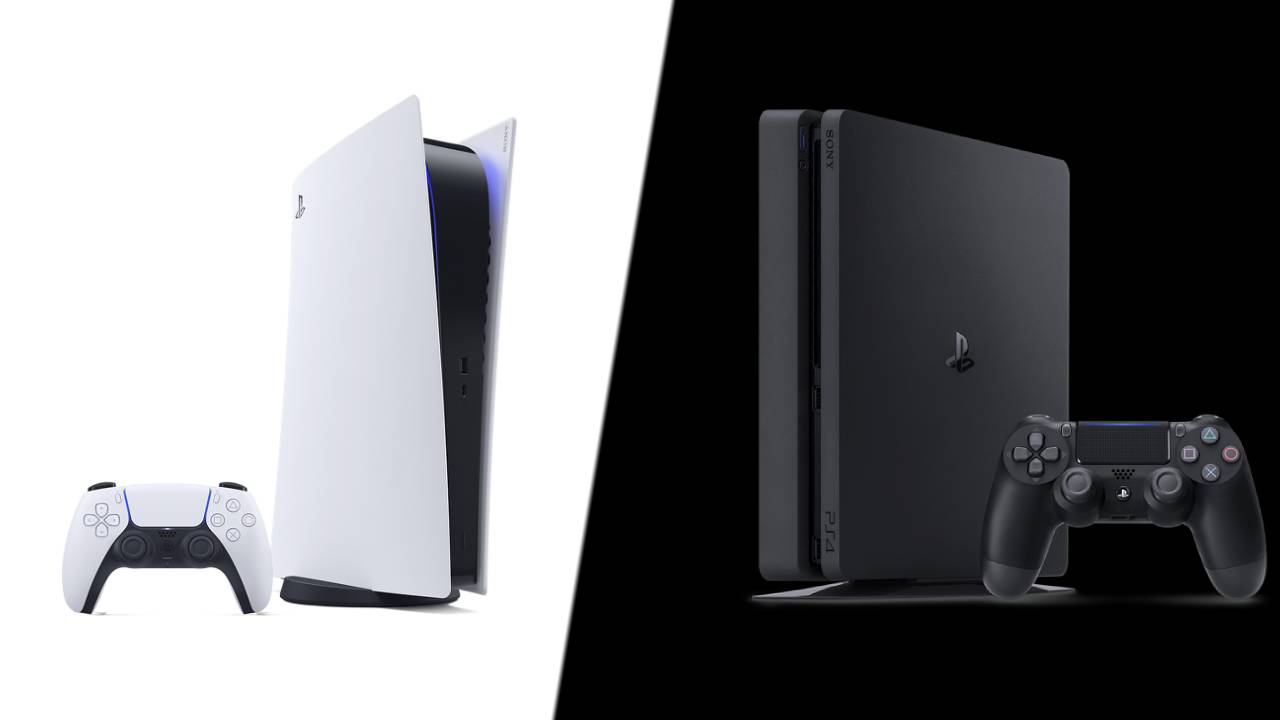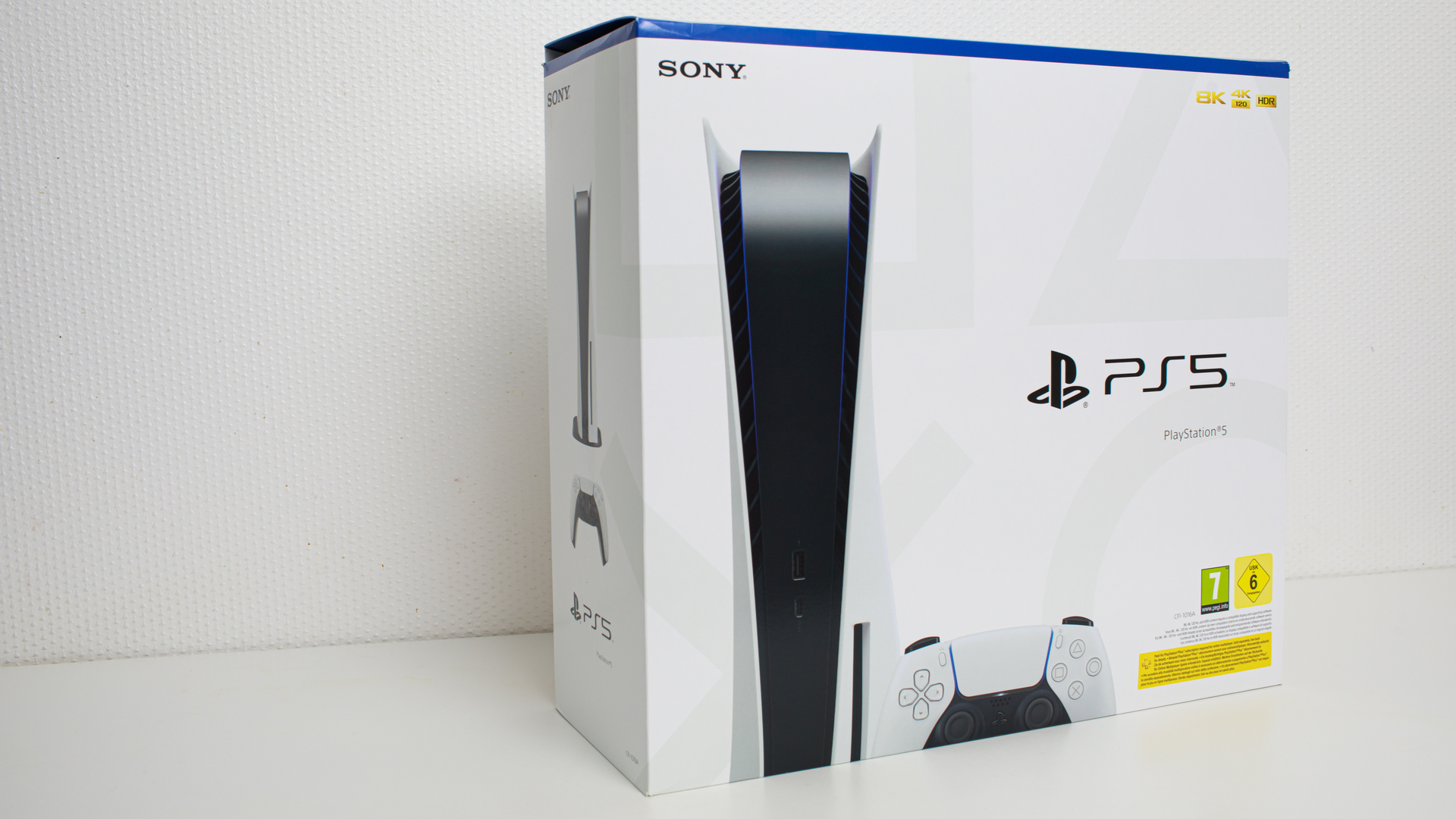PS5 vs PS4: should you buy a PlayStation 5 in 2022?
If you already own a PS4, you might be interested in taking the next step

PS5 vs PS4 – which one should you choose? Generally, the latest release is the sensible option if you’re not already invested in PlayStation, but there are many reasons to consider a last-gen console instead. As with everything, this comes down to your personal preferences and budget, so this guide’s here to help you decide what works best.
The PS5 is Sony’s latest console and it’s significantly more powerful than the PlayStation 4. It has a better CPU, GPU, and a blazing-fast internal NVMe SSD, which can load games in seconds. There’s also Sony’s DualSense controller, which boasts haptic feedback and adaptive triggers, adding an extra sense of immersion that we'd never experienced before.
However, if you don’t already own a PlayStation console, there are a few reasons why you may consider a PS4 instead. It’s true that we’ve gradually seen more PS5 exclusives, including Ratchet and Clank: Rift Apart, Returnal, and the Demon’s Souls remake. But recent games like Gran Turismo 7 and Horizon Forbidden West were both cross-generation releases, and they run just fine on Sony's older machine. Factor in an enormous back catalog of hits, and there's a great case to be made for going with the cheaper PS4.
Right now, finding where you can buy a PS5 has been difficult for many. We’re almost halfway through 2022 and stock levels still haven’t noticeably improved –supply often sells out within minutes of retailers obtaining them. However, Sony’s continuing production of its older console into 2022, meaning you should still be able to buy the PS4 with comparative ease.
Both consoles have different strengths and weaknesses, which you can read more about in our in-depth PS5 review and PS4 (Slim) review. So, if you’re undecided on what Sony gaming system to buy, we’ll help you decide which choice is right for you.
PS5 vs PS4: price

Sony's PS5 costs $499.99 / £449.99 / AU$749.95, while the PlayStation 5 Digital Edition (identical specs, there’s just no disc drive) comes in at $399.99 / £349.99 / AU$599.95. Both console versions are available worldwide, having launched in November 2020.
As for PS4, you’ve got the 500GB slim model costing $299.99 / £259.99 / AU$610.90. There’s also a 1TB edition but that’s widely out of stock, though you can easily expand the PS4’s storage with an external hard drive, supporting a minimum of 250 GB and 8TB maximum.
Sign up for breaking news, reviews, opinion, top tech deals, and more.
It’s worth noting that while the more powerful PS4 Pro model has been officially discontinued, Sony’s continuing PS4 production into 2022, so you should still find new stock at different retailers.
However, if you do decide to opt for a PS5, then be warned. Thanks to the semiconductor crisis worldwide, PS5 stock has been notoriously difficult to get hold of since it launched, though it’s still hitting sales milestones. This situation could continue into 2024, according to Intel's CEO.
PS5 vs PS4: specs

When it comes to specs, no one should be surprised that the PS5 comes out the winner. Sony’s next-gen console is powered by a custom-built version of the third generation AMD Ryzen chipset, which packs eight cores, uses the Zen 2 architecture and Navi graphics. The CPU runs at 3.5GHz, while the GPU offers 36 compute units running at 2.23GHz and offering 10.28TFLOPs. That’s all backed up by 16GB of GDDR6, coming in at a bandwidth of 448GB/s.
So, you might be wondering then, what does this all mean? For starters, the PS5 can support more advanced features than its predecessor like ray tracing and VRR, which were previously exclusive to higher-end gaming PCs. 3D audio is also available through Sony’s Tempest Engine, which was initially exclusive to headsets, but you can now enable this through TV speakers too. PS5 also includes an Ultra-HD Blu-ray player too, whereas PS4 is limited to standard Blu-rays.
The PS5 is capable of hitting 120hz for smoother gameplay and supports resolutions up to 8K, though this isn’t available yet with most games. That being said, some TVs only support up to 1080p HD, though 4K TVs have slowly gained momentum, and you’ll need an HDMI 2.1 compliant unit to get the most out of Sony's new machine.
Another advantage the PS5 has is its SSD storage, which is custom-built. Offering up to 825GB of usable storage with a raw 5.5GB/s throughput (and up to 9GB/s worth of compressed data), it allows for much faster load times, preventing bottlenecks that you might experience on the older hardware. Unlike the PS4, you can't play PS5 games from an external hard drive, though they can be stored on one. That said, you can upgrade the PS5's internal SSD storage quite easily.
But that's not all. Unlike the PS4’s DualShock 4, the DualSense controller on PS5 features adaptive triggers, letting developers add resistance to certain actions for more accurate feedback. Haptic feedback is also included, replacing the PS4’s rumble feature to incorporate subtle vibrations, improving immersion. Finally, there’s a built-in microphone on the controller so you don’t need a dedicated PS5 headset, though that remains the preferable option.
As for the PS4, its specs are understandably lower but it's certainly no slouch. Utilizing an AMD Jaguar x86-64 8-core CPU and 1.6GHz predecessor, it’s powered by a GPU with 800MHz clock speed and a GPU capable of 1.84 TFLOPs. It also utilizes 8GB GDDR5 memory, but reserves up to 3.5GB for its operating system, leaving developers with 4.5GB to work with.
So, it means that if you opt for the PS4, you’ll be missing out on the higher-end features and if you want 4K support, you’d need to opt for a PS4 Pro, which has since been discontinued, but you may find one secondhand. There’s no 120hz support on either model, as the maximum refresh rate is 60Hz.
PS5 vs PS4: design

Before diving into the PS4’s design, it’s worth pointing out that we’re basing this on the 2016 Slim model since the original 2013 console has long been discontinued. But more to the point, there’s no contest for the smallest console here.
PS4 Slim measures 10.4 x 11.3 x 1.5 inches. If space in your home entertainment setup is an issue, that’s quite a bit smaller than the PS4 Pro, but both are dwarfed by the PS5.
The PS5 is massive, coming in at 15.3 x 10.2 x 4.1 inches approximately. It’s a lot more obtrusive in your home setup but there’s one key benefit this brings. Thanks to a much larger fan, it’s a lot quieter than the PS4 and doesn’t generate nearly as much heat.
PS5 vs PS4: games

The PS4 has some incredible games and Sony has a packed first-party lineup for players to enjoy. Bloodborne, Gran Turismo Sport, The Last of Us 2, The Last Guardian, and Horizon Zero Dawn are all wonderful games, and we haven't even mentioned multi-platform titles either, like Rockstar’s Red Dead Redemption 2.
Thankfully, the PS5 is backward compatible with PS4 games, meaning you’ll be able to experience almost the entire library of PS4 titles. We’re still getting cross-generation games like Marvel's Spider-Man: Miles Morales and Horizon Forbidden West, though we’ve begun seeing PS5 exclusives like Returnal and Ratchet & Clank: Rift Apart.
Some games like Horizon have been patched to provide a performance boost on PS5, bumping framerates up to 60fps. That’s not accounting for others like Marvel's Spider-Man and Uncharted, which received full next-gen ports. It’s worth noting that not every PS4 game is compatible with PS5, either, though the incompatible games list is miniscule.
Unfortunately, next-gen games have gotten more expensive and many publishers have increased prices by $10 (£10) more on standard editions of games. So, you could be looking at $70 (£70) releases, meaning PS5 games will likely cost you more. Some games (not all) do have free upgrade paths, but other cross-generation games have often locked this upgrade behind more expensive editions or for a small fee.
PS5 vs PS4: verdict

Nine years on, there’s not much reason to opt for a PS4 at this stage, unless you’ve got a very limited budget. If you’re not that worried about securing the latest and greatest hardware – and you don’t really fancy a digital-only console – choosing a PS4 still works out.
Even if you buy a new PS4, you'll still save just under $200 / £200 compared to the PS5, probably more if you go secondhand. You’ll have a fantastic back catalog of games to choose from that can all be found relatively cheap these days, with one last big hitter in God of War: Ragnarok on the way later this year.
Otherwise, the PS5 trumps the PS4 at every turn. You’ve got much higher specs, Ultra-HD Blu-Ray support, 4K support, backward compatibility with almost every PS4 game, and new releases are slowly going exclusive. Throw in the DualSense controller, super-fast load times, and quality of life improvements, it's hard to beat. For future-proofing, this is a much better investment than a PS4, even if you opt for a digital-only unit.
Henry is a freelance writer based in Bournemouth, United Kingdom. When he's not wandering in VR or burning through his RPG backlog, he's probably planning his next D&D session.
